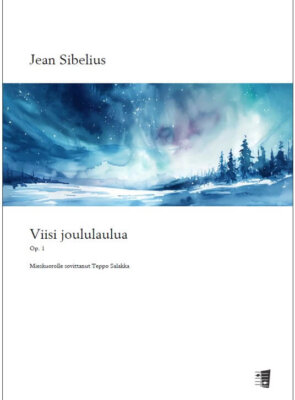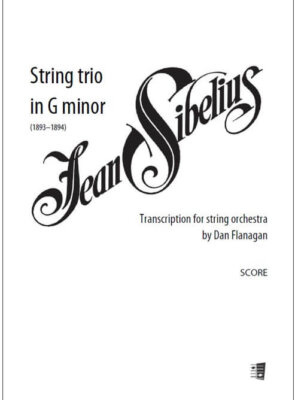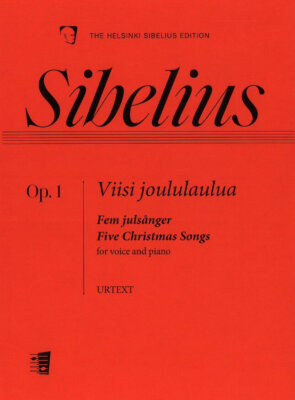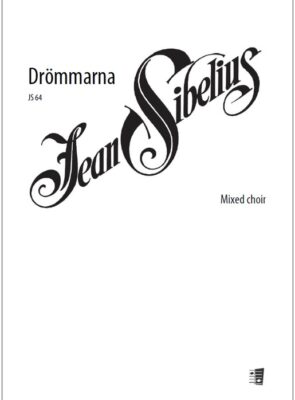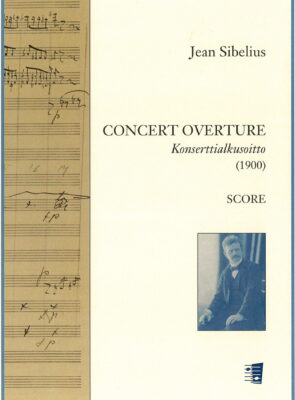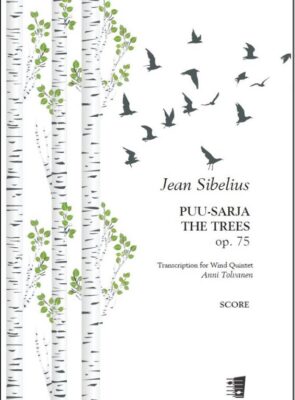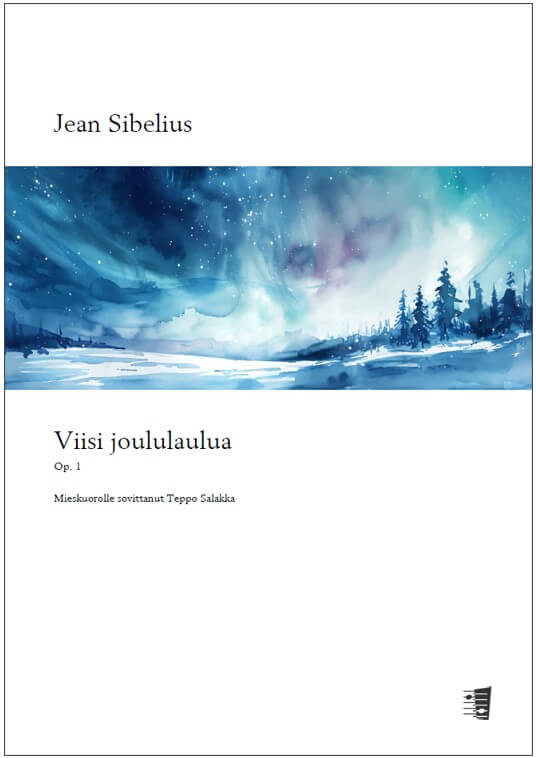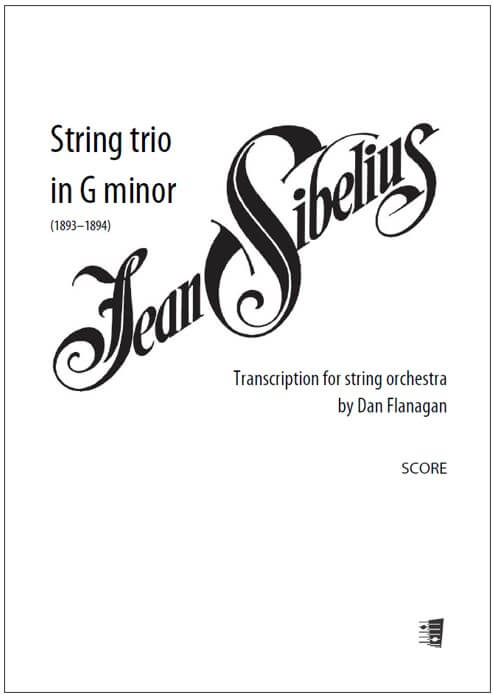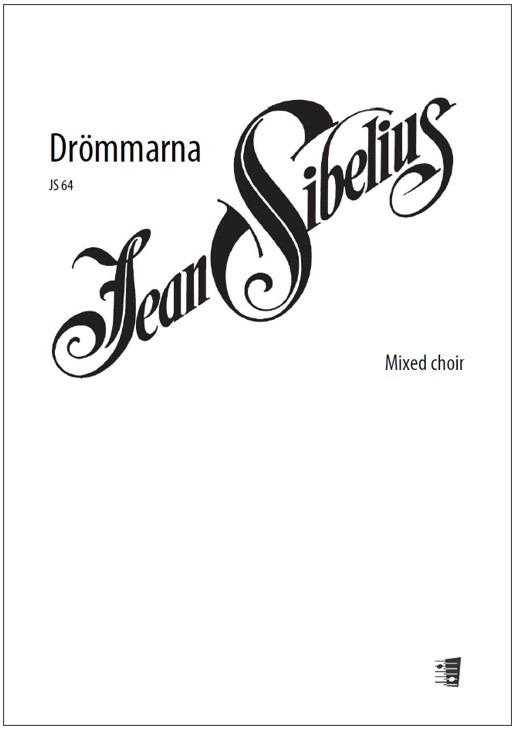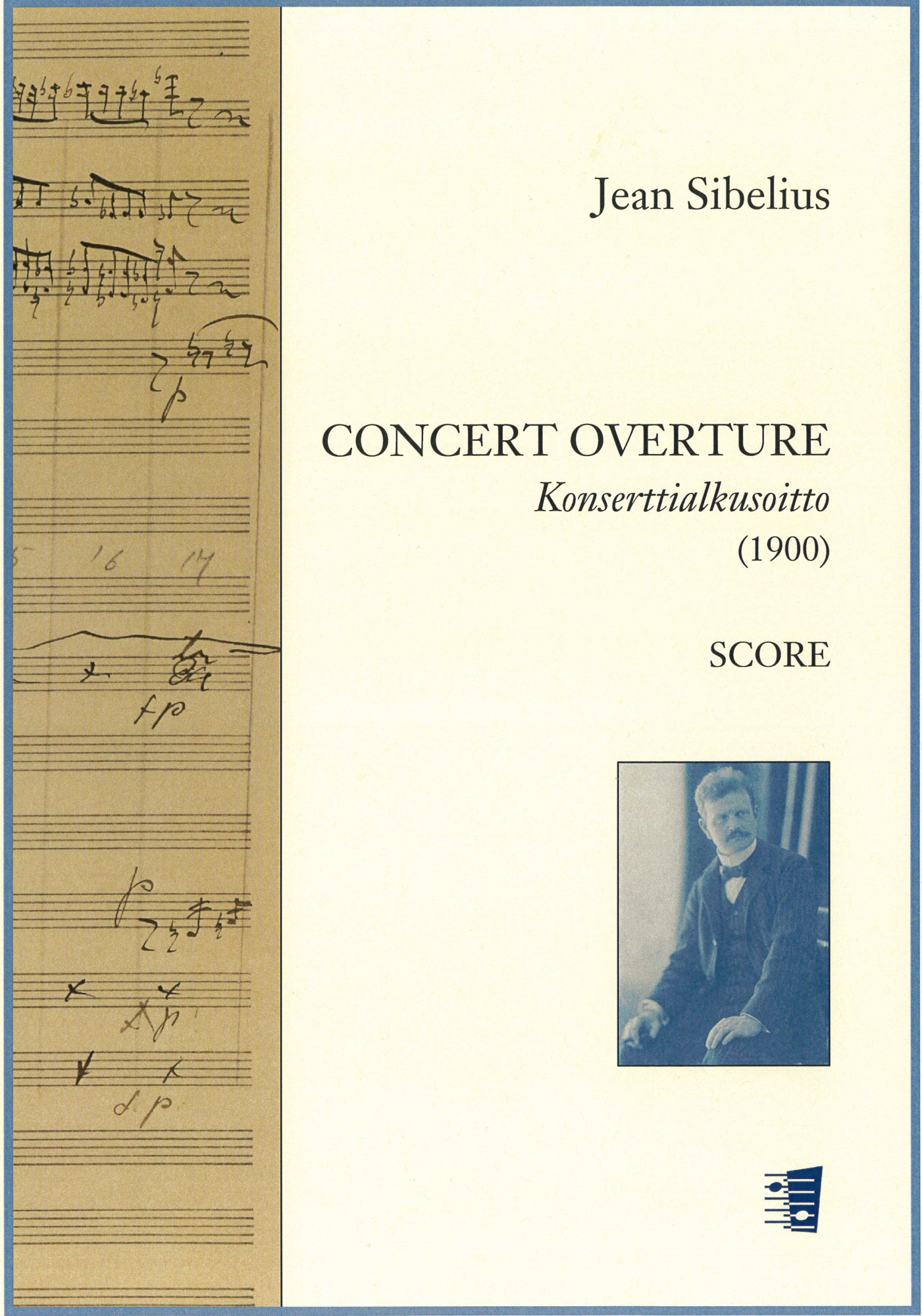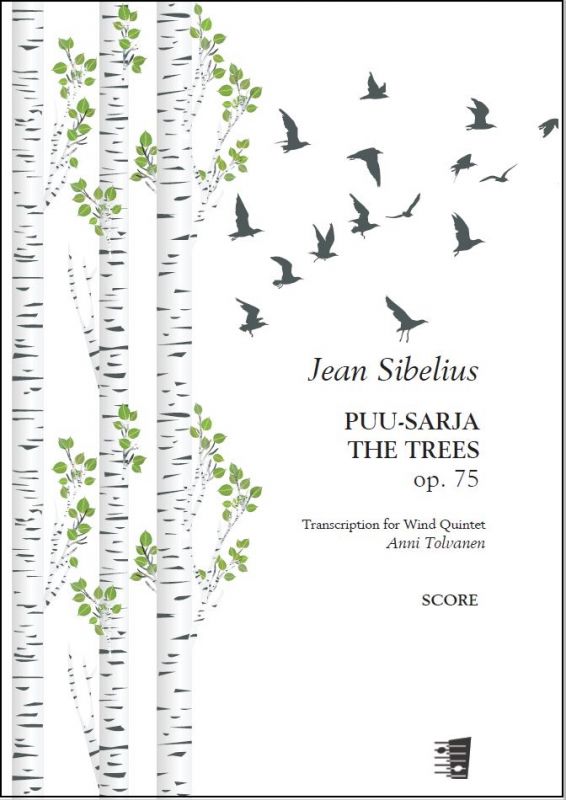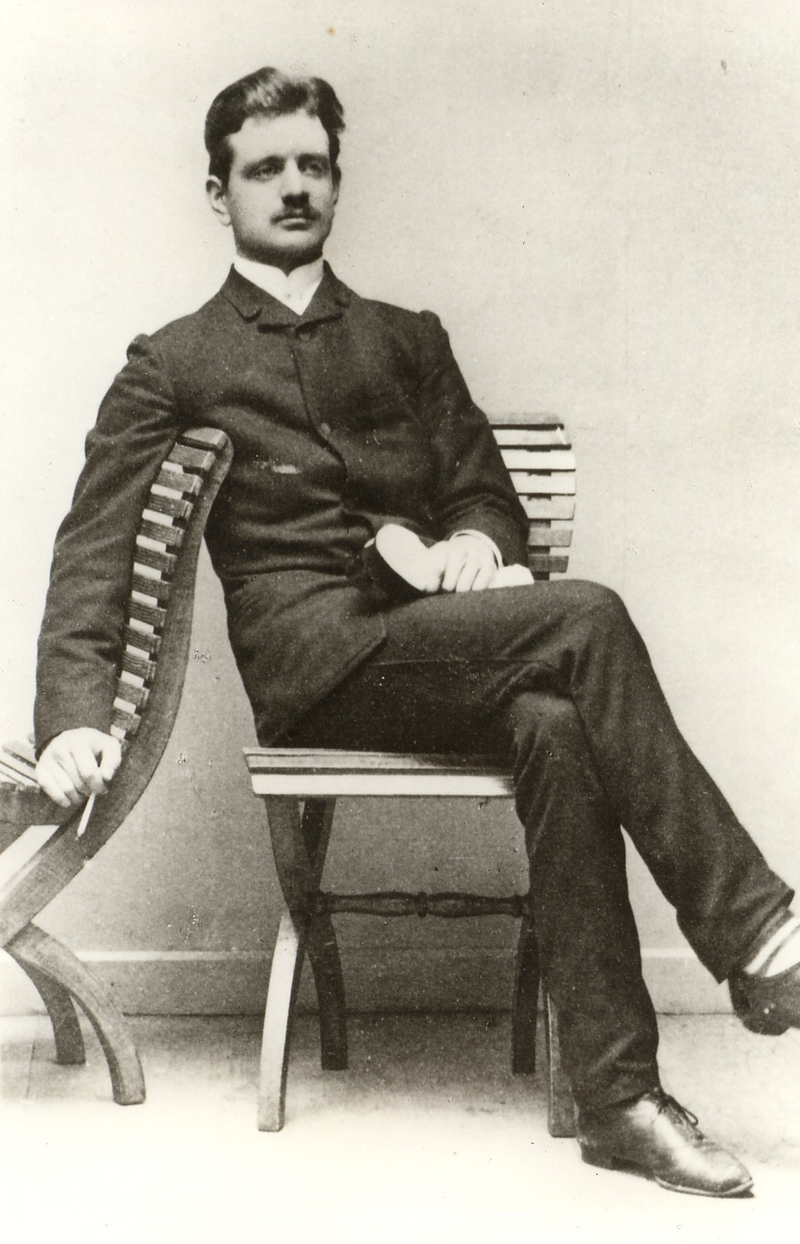
Sibelius, Jean
Rare gems by Sibelius
In the 1990s a number of formerly unpublished Sibelius works were made available – before that they had remained practically unknown to musicians and the general public. This important move ensured international distribution for a substantial body of new repertoire from the pen of this great composer. The works include items by the young Sibelius as well as forgotten compositions from his mature period, such as the Suite in D Minor for violin and orchestra [op. 117] which was written in 1928-29 and so dates from his late period. The most recent discovery is the Concert Overture by Sibelius, a 12 minute piece for chamber orchestra (read more below). Based on material found when studying the manuscript of the opera The Maiden in the Tower, it was discovered by the conductor Tuomas Hannikainen, following references made by Sibelius himself.
About the first publications
During the past decades the image of Jean Sibelius (1965-1957) has undergone a radical change with the rediscovery of his music for stage and the reappearance of early versions of some of his works in the concert repertoire. The most penetrating insight into his development as a composer has, however, been provided by the discovery of works he wrote as a young man.
Sibelius was already a chamber music composer of some distinction even before he turned to his first great orchestral work, Kullervo. A dozen or so large-scale works and several dozen small pieces have been preserved from the years 1883-91. All the works written towards the end of this period contain the seeds of musical features that were to burst into flower in his later music.
Most of the works that have been published for the first time date from the latter part of the chamber music period. There are also some miscellaneous items written in later years, such as the incidental music for the play Ödlan (The Lizard) for orchestra (1909) and the very first piece known to have been composed by Sibelius, Vesipisaroita (Water Droplets, 1875). The fact that these works are now being published is of the utmost importance, because they well deserve a place in the basic concert repertoire.
Orchestral music
The Overture in E Major and the Scène de Ballet, both dating from 1891, are among the earliest works written by Sibelius for orchestra. Infused with all the freshness of youth, they also hint at the great symphonist to come. The Scène de ballet astonished contemporary audiences with its subtle distancing, the serious undercurrent looking ahead to the Valse triste, its minor key and its predilection for low strings and wind. Sibelius’s handling of the orchestra is surprisingly refined and colourful, including oboe and cor anglais solos, a triangle and castanets. The airiness and fanfares of the enchanting Overture in A Minor herald a new, less inhibited classical period in the works of Sibelius. The lively main section in the major and the classical orchestration bear features that suggest an admiration for Mendelssohn.
Like the serenade and the divertimento, the cassazione was originally a piece of music for performance in the open air. The Cassazione Op. 6 by Sibelius, sometimes known as “Fantasia for Orchestra”, was premiered in 1904 with the composer conducting. The world of sound in this one-movement piece comes very close to that of the violin concerto and the second symphony.
The Countess’s Portrait is a charming, shortish work for reciter and string orchestra based on a text by the Swedish writer Anna Maria Lenngren with an addition by Zachris Topelius. The narration is optional and the work can be performed by string orchestra only. Music for the Play “The Lizard” (Ödlan, 1909) contains two items, the symbolic-expressive idiom of which shows Sibelius at his most enchanting. The second of the two, lasting about a quarter of an hour and depicting the death of the maiden, makes a magic impression. The chromatic and whole-note motifs and mysterious string tremolos are a direct forerunner of Tapiola. Sibelius himself looked upon The Lizard as one of his most delicate works.
The Wedding March, composed in 1911 for Adolf Paul’s play “The Language of the Birds”, is anything but a traditional wedding march, being highly colourful and more in the nature of chamber music.
Having composed Tapiola and the incidental music to The Tempest, Sibelius became engulfed in the “silence of Järvenpää”. During that time he was not, however, completely idle, composing a host of small-scale pieces and revising some of his earlier ones. It is from this period that the Suite for Violin and String Orchestra [Op. 117] dates, though it was not discovered until 25 years after the composer’s death. The suite is in three movements: Country Scenery, Serenade, Evening in Spring, and In the Summer.
The Concert Overture
A major addition to the Sibelius work list, the Concert Overture is ”a sensation”, as the critics hailed it after the performance by the Avanti! Chamber Orchestra in 2021. It is a 12-minute work for small chamber orchestra (1121-2110-02-str, perc: Tamburino, Gran cassa, Piatto, Triangolo). The work has its origins in Sibelius’s stage work The Maiden in the Tower (Jungfrun i tornet) and was “hidden” inside its music. Conductor and scholar Tuomas Hannikainen discovered the existence of the Overture during his research in 2019. He has edited and reconstructed the work and conducted it in 2021. The concert was broadcast at YLE and it is also available on YouTube. You can browse sample pages of the score here, and read the complete Editorial. First publication of the score is available in our web shop and performance material (rental) is available e.g. via Zinfonia.
Sibelius conducted the world premiere of the Concert Overture in Turku, Finland on 7 April, 1900. A few days earlier a last-minute program change was made: instead of the Swan of Tuonela, a hitherto unperformed work would be premiered. The original, three-minute Overture for Jungfrun i tornet was too short to be a suitable opening number, so Sibelius composed a new 12-minute orchestral work, the Concert Overture, for the Turku concert.
The work was well received. The press wrote: “The Overture is completely original and rich in ideas”. The reviews after the performance in 2021 did not spare their words either: “The ‘new’ Sibelius Concert Overture is a celebration of nature and love. It is a sensational discovery… The cheerful, easy-going work is a significant addition to Sibelius’s orchestral catalogue. One does not tire of listening to it.”
Chamber music
Water Droplets and the Canon are early chamber pieces by Sibelius: short and fairly easy to play. Water Droplets was the first piece he ever wrote, at the age of nine. The Duo for violin and viola is a later, slightly longer piece of melodic charm probably written as an exercise. All three pieces are excellent repertoire for young students and amateur musicians.
Sibelius composed the three early cello pieces (Andantino in C Major, Andante Molto in F Minor and Tempo di Valse, “Lulu Waltz”) towards the end of his chamber music period. The longest of them, the Andante molto, has a solo cadenza and was written for his brother Christian. Jean Sibelius premiered the Tempo di valse with his brother in Loviisa in August 1889. Sibelius wrote the beautiful Suite in E Major for Violin and Piano for his own use; in the 1880s he was still mainly studying the violin and entertaining hopes of a career as a violinist. The suite does indeed demand a considerable display of skill, containing difficult passages and a long solo cadenza in the first movement.
The Fugue for Martin Wegelius was originally to have been the finale to Sibelius’s A minor quartet but in the end he abandoned it. Its tension lies in the syncopated theme that presses impetuously towards its chromatic climax. Nothing is known of how the Adagio for string quartet came to be written. It would, however, appear from the manuscripts that Sibelius originally intended it as the slow movement of his quartet in B flat major (1890). This would explain why, for example, it does not have a final climax, simply ending with a recapitulation and cadenza.
The Suite in A Major for string trio was written as a student exercise and first performed at a concert given at the Helsinki Music Institute in 1889. Ferrucio Busoni described the performance as follows: “We soon pricked up our ears on realising that the music taking the air was far above the standard of the usual student exercise…” For the first time timbre becomes a major factor in Sibelius’s idiom in the A major suite, which also makes somewhat bold use of rhythm and harmony for such a youthful work. The G major trio is a product of Sibelius’s mature chamber music period. It was never finished, but the version published by Warner/Chappell Music Finland has been constructed purely from Sibelius’s own material. The only complete movement, Lento, is a combination of various forms and in itself traces a symphonic span. Sibelius uses a similar one-movement construction in his seventh symphony.
The F major sonata is the last and the most mature of the violin works written by Sibelius in his youth. The young Sibelius was strongly influenced by composers such as Grieg, as can clearly be heard in the F major sonata. The structure of the work is also more romantic than any of his earlier works rooted in the classical tradition. In the Andante he introduces aspects of folk music for the first time in his music, thereby anticipating the “Finnish stamp” of many of his works of the 1890s.
The Piano Quartet in C Minor is in variation form – rare in early Sibelius. The introduction already reveals that he was thinking along orchestral lines even as a young student in Vienna. The piano quartet is, apart from a few small pieces written in 1891, the last completed work of the chamber music period. From then onwards Sibelius concentrated solely on his Kullervo for nearly a year.
Solo works
Theme and Variations in D Minor for solo cello is a beautiful, virtuosic work composed by Sibelius at the age of 22. In it he makes wide use of trills, double stopping and spectacular runs. The three piano pieces (To Longing, The Cavalier and Spagnuolo) are published together, though they originally appeared in magazines. The Cavalier is in the nature of a military march in which the piano imitates the instruments in the band from the tuba to the piccolo. Florestan is a piano suite in four movements dedicated to Adolf Paul and is accompanied by programme notes written by the composer.
6 sånger / 6 laulua / Six songs Op.88 [arr. Jalas]
for voice and orchestra
voice and orchestra
223(III=clb)0-2000-1(+trg)0-str 1. Blåsippan / Sinivuokko / Die Anemone 2120-0000-01-str - 2 min (1:02) 2. De bägge rosorna / Kaksi ruusua / Die beiden Rosen str - 2 min (1:26) 3. Vitsippan / Valkovuokko / Die Sternblume 2220-2000-10-str - 2 min (1:23) 4. Sippan / Vuokko / Die Primel 2020-0000-01-str - 2 min (1:12) 5. Törnet / Villiruusu / Der Dornbusch 203(III=clb)0-2000-10-str - 3 min (2:22)
Duration: 10
Andante festivo [SALES MATERIAL]
(1922 rev 1930)
for string orchestra
timp(ad lib)-str
Duration: 5
Arioso (Flickans årstider)
(1911)
for high voice and string orchestra
str key signature F#minor (voice range D#1 - A2)
Duration: 5
Berceuse
for orchestra
1110-0110-11-str
Duration: 2
Cassazione [full orchestra]
for full orchestra
2222-4230-10-str
Duration: 13
Cassazione [small orchestra]
(1904)
for small orchestra
2020-2110-10-str
Duration: 13
Cinq morceaux for chamber orchestra
Arrangement of Suite Op. 75 "The Trees" (1914-19/2024)
for chamber orchestra
1111-1000-01(=vibraf)-str
Duration: 11
Concert Overture
(1900)
for orchestra
1(+picc)121-2110-02-str Percussione: Tamburino, Gran cassa, Piatto, Triangolo
Duration: 12
En etsi valtaa loistoa [arr. Fougstedt]
Giv mig ej glans (1909)
for (voice and) string orchestra
str G or A Major
Duration: 3
En etsi valtaa loistoa [arr. Kiiski]
Giv mig ej glans
for orchestra
2200-4331-10-str G major Instrumental version without singing.
Duration: 3
En etsi valtaa, loistoa [arr. Heikkilä]
for voice and orchestra
1100-1000-00-keyb-str E major
Duration: 3
En etsi valtaa, loistoa [arr. Sandberg]
(1909)
for voice and string orchestra
str A major
Duration: 3
Har du mod? Version 1
Elon taistohon käy! (1904)
for male choir and orchestra
2222-4231-14-str Perc: Tamburo piccolo, Gran cassa, Piatti, Triangolo
Duration: 3
Har du mod? Version 2
Elon taistohon käy! (1904 rev. 1911)
for male choir and orchestra
2222-4230-14-str Perc: Tamburo, Gran cassa, Piatti, Triangolo
Duration: 3
Har du mod? Version 3
Elon taistohon käy! (1904 rev. 1911-1912)
for male choir and orchestra
3(I=picc)01(=clb)0-2200-03-str Perc: Tamburo, Gran cassa, Triangolo
Duration: 3
Har du mod? Version 4
Elon taistohon käy! (1904 rev. 1911-1912)
for male choir and orchestra
2222-4230-12-str Perc: Tamburo piccolo, Triangolo
Duration: 3
Humoresque I - VI [Urtext]
for violin and orchestra
I: 2222-2000-10-str (+hp in early version) 4' II: 0000-2000-10-str 2' III: str 5' IV: str 3' V: 2022-0000-str 3' VI: 2002-0000-str 3'
Duration: 20
Humoresques III & IV [Urtext]
for violin and string orchestra
III: 5' (str) IV: 3' (str)
Duration: 8
Hymn to Thais, the Unforgettable
Hymni Thaisille (1909)
for voice and orchestra
22(II=ca)22-0000-10-str C major
Duration: 2
Jordens Sång / Maan laulu / Song of the Earth
(1919)
for mixed chorus and orchestra
2222-3220-10-str
Duration: 15
Laulu Lemminkäiselle
A Song for Lemminkäinen (1896)
for male chorus and orchestra
2(I&II=picc)222-4331-11-str Perc: Piatti, Triangolo
Duration: 3
Maan virsi / Hymn till jorden
Hymn auf das Land / Hymn to the Earth (1920)
for mixed chorus and orchestra
2222-4230-10-str
Duration: 10
Music for the play The Lizard
Musik till skådespelet Ödlan (1909)
for string orchestra
str
Duration: 20
Narciss / Narsissi / Narzisse / Narcissus
(1925)
for high voice and orchestra
2222-2200-hp-str
Duration: 3
Norden / Pohjola [arr. Parmet]
(1917)
for high voice and orchestra
2222-4000-str
Duration: 3
Norden [arr. Kaipainen]
(1917)
for high voice and orchestra
33(III=ca)3(III=bcl)3(III=cfg)-4330-10-str
Duration: 3
Oma maa
Det Egna Landet / My Own Land (1918)
for mixed choir and orchestra
2222-4230-11(glsp)-str Study score, Vocal score & Chorus score on sale
Duration: 11
On hanget korkeat (arr. Kuusisto for orch.)
Visst drivor höga / The Snow Lies Deep (1901)
for orchestra
2222-2210-11(Glockenspiel)hp-str
Duration: 3
On hanget korkeat, nietokset [arr. Heikkilä]
for voice and orchestra
1100-1000-00-harm-str E flat major
Duration: 3
Overture in A minor
(1902)
for orchestra
2222-4421-10-str
Duration: 7
Overture in E major
(1891)
for orchestra
2222-4221-11-str Percussione: triangolo, piatti
Duration: 12
Overture in F minor [SALES MATERIAL]
(1889-90)
for brass septet
Eb cornet, 2 Bb cornets, horn, 2 tenor horns, tuba
Duration: 3
Petite Suite [SALES MATERIAL]
(1889-91)
for brass septet
Eb cornet, 2 Bb cornets, horn, tenor horn, baritone horn, tuba
Duration: 10
Polonaise
(1916)
for orchestra
1121-2210-01-str
Duration: 2
Presto / Scherzo op. 4/3 [SALES MATERIAL]
(1889-90)
for string orchestra
str
Duration: 7
Rakastava / The Lover, The
(1893 rev 1911-1912)
for string orchestra
timp-str [SALES MATERIAL]
Duration: 10
Scène de ballet / Ballet Scene
(1891)
for orchestra
2(II+picc)2(II=ca)2(II=bcl)2-4221-03-str Percussione: Piatto colla bacchetta, Triangolo, Castagnetti
Duration: 9
Snöfrid
(1900)
for narrator, mixed or female chorus and orchestra
2(I,II=picc)12(2=bcl)1-2310-11-str Percussion: Bass drum, Cymbals
Duration: 12
Souda, souda sinisorsa /Simma and, från blåa fjärd
Swim on, Fair Duck (1899)
for medium voice and orchestra
2122-4000-1(+trg)0-str A major
Duration: 2
Souvenir [SALES MATERIAL]
for string orchestra
str also available for string quartet
Duration: 2
Suite for Violin and String Orchestra
(1928-29)
str
Duration: 7
Suite Op. 75 "The Trees"
Orchestral arrangement of Cinq Morceaux pour piano (1914-19/1942)
for orchestra
2122-4230-01-hp(/pf)-str Percussione (1 esec.): Timpani, Piatti, Campanelli, Triangolo Movements: 1. När rönnen blommar / Kun pihlaja kukkii / When the Mountain Ash Is Blooming [1111-1000-01-hp(/pf)-str] 2'00 2. Den ensamma furan / Yksinäinen honka / The Solitary Fir Tree [2122-4230-01-hp(/pf)-str] 2'30 3. Aspen / Haapa / The Aspen [2122-2000-01-hp(/pf)-str] 2'00 4. Björken / Koivu / The Birch [1121-1100-01-hp(/pf)-str] 1'30 5. Granen / Kuusi / The Spruce [1111-1000-01-hp(/pf)-str] 3'00
Duration: 11
The Countess's Portrait / Grevinnans konterfej
(1906)
for recitation and string orchestra
str The piece can be performed also without recitation
Duration: 4
Tiera [SALES MATERIAL]
(1894)
for brass septet with percussion
Eb cornet, 2 Bb cornets, Tenor horn, Baritone horn, Euphonium, Tuba, Bass drum, Cymbals
Duration: 5
Uusmaalaisten laulu, The
Song of the People of Uusimaa
for orchestra
2222-2210-str
Duration: 3
Väinön virsi / Väinämöinen's sång
Väinämöinen's Song (1926)
for mixed chorus and orchestra
2222-4330-11(or2)-str
Duration: 11
Vem styrde hit din väg?
Wer hat dich hergeführt? (1917-18)
for medium voice and orchestra
2020-0000-str
Duration: 3
Viisi joululaulua (arr. Kuusisto)
Fem julsånger / Five Christmas Songs (1895-1913)
for voice and orchestra
2000-0000-str 1. Nu står jul vid snöig port / Joulu saapuu portin luo / Now stands Yule at the Snowy Gate (1895 rev 1913) 2’ Text: Z. Topelius (Sw/Fin/Eng) Score M-042-08200 and parts (str33221) M-042-08201 on sale 2. Nu så kommer julen / Tervehtii jo meitä / Now is Christmas Coming (1895 rev 1913) 3’ Text: Z. Topelius (Sw/Fin/Eng) Score M-042-08200 and parts (str33221) M-042-08202 on sale 3. Det mörknar ute / Jo joutuu ilta / O’er Hill and Dale (1895) 2’ Text: Z Topelius (Sw/Fin/Eng) Score M-042-08200 and parts (str33221) M-042-08203 on sale 4. Giv mig ej glans / En etsi valtaa, loistoa / Gib mir nicht Glanz / We Ask for Nothing Rich or Rare (1909) 4’ Text: Z. Topelius (Sw/Fin/Eng/Ger) Score M-042-08200 and parts (str33221) M-042-08204 on sale 5. On hanget korkeat / Visst drivor höga som skyn vi ha / The Shining Snows Are Driven High (1901) 3’ Text: V. Joukahainen (Fin/Sw/Eng) Score M-042-08200 and parts (str33221) M-042-08205 on sale
Duration: 14
Viisi joululaulua [SALES MATERIAL]
Fem julsånger / Five Christmas Songs
for solo voices (SATB) or mixed choir and ensemble
fl-str quintet (or str orch) 1. Joulupukki kolkuttaa (Joulu saapuu portin luo / Now stands Yule at the Snowy Gate) 2. Jo on joulu täällä (Tervehtii jo meitä / Now is Christmas Coming) 3. Jo joutuu ilta (O’er Hill and Dale) 4. Meditaatio (Meditation), composed by Wessman on themes by Sibelius 5. On hanget korkeat (The Shining Snows Are Driven High) 6. En etsi valtaa, loistoa ( We Ask for Nothing Rich or Rare)
Duration: 15
Wedding March / Häämarssi
from the Play Die Sprache der Vögel (1911)
for orchestra
213(III=bcl)0-0220-12-str Perc: Tamburo, Tamburino, Gran cassa, Triangolo
Duration: 4
Concert Overture (YouTube)
Avanti!/Tuomas Hannikainen
Oma maa (Homeland/Our Native Land)
Cantata for mixed chorus and orchestra
Finnish National Opera Chorus&Orchestra/Eri Klas
(Ondine Records CD-754-2)
Maan virsi (Song to the Earth)
Cantata for mixed chorus and orchestra
Finnish National Opera Chorus&Orchestra/Eri Klas
(Ondine Records CD-754-2)
These cantata gems have been overshadowed by the maestro’s other works. However, they serve as exciting portals to his symphonic world. Oma maa (text in Finnish or Swedish) is a sort of hymn to the nightless northern night and towards the end achieves almost sacral rapture – a piece that has been hailed by several Sibelius scholars. Maan virsi (text in Finnish, Swedish, English or German) is a deep-hued, lyrical song in praise of nature, with charming orchestral sections.
Scène de Ballet
Lahti Symphony Orchestra, cond. Osmo Vänskä
(BIS Records CD-1565 “Spirit of Nature”)
Concert Overture (first edition, 2022)
Cassazione (for large orchestra)
Suite for Violin and String Orchestra Op. 117
Scène de ballet
Overture in A minor
Overture in E major
Music from the play “The Lizard” / Ödlan
Maan virsi / Hymn to the Earth / Hymn till jorden, Op. 95 (for mixed choir and orchestra)
Laulu Lemminkäiselle / A Song for Lemminkäinen, Op. 31/1 (for male choir and orchestra)
The Trees Suite, Op. 75 (arr. Pingoud)
Wedding March

